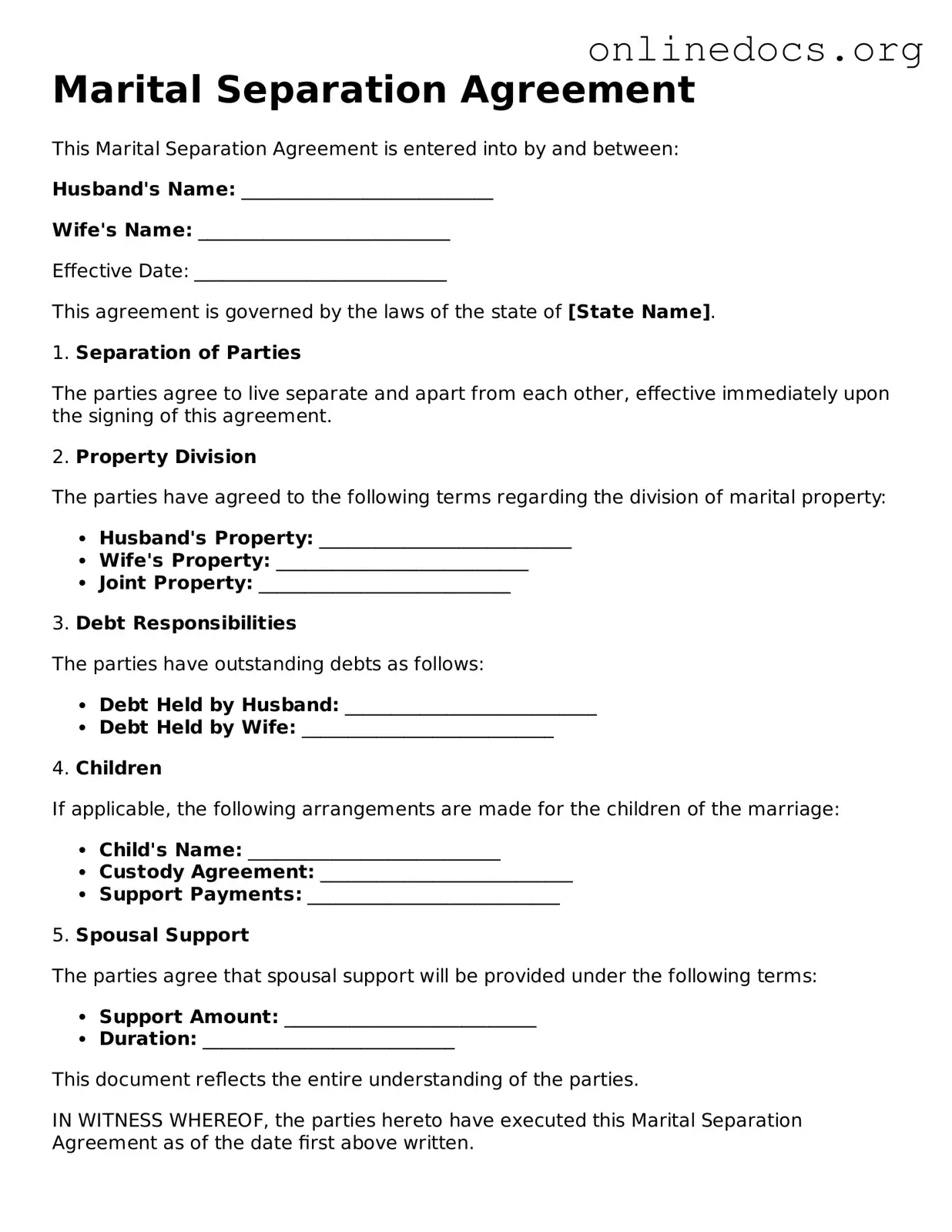The Marital Separation Agreement is similar to a Divorce Agreement, which outlines the terms of a couple's separation when they decide to end their marriage. Both documents address issues such as property division, child custody, and support obligations. While a Divorce Agreement finalizes the dissolution of the marriage, a Marital Separation Agreement allows couples to live apart while still legally married, providing a framework for their separation without immediately proceeding to divorce.
A Texas RV Bill of Sale form is an essential document that records the transaction between a buyer and seller for the sale of a recreational vehicle within the state of Texas. It serves as a legal proof of purchase and documents the transfer of ownership from one party to another, ensuring that both parties have the necessary clarity regarding the sale. For more information on how to properly complete a Texas RV Bill of Sale, you can visit legalformspdf.com, which provides valuable resources and templates.
Another related document is the Separation Agreement. This is often used interchangeably with the Marital Separation Agreement, but it can also apply to couples who are not married. A Separation Agreement establishes the terms under which the parties will live apart, covering similar topics like financial responsibilities and child arrangements. The key difference lies in the legal status of the individuals involved, as a Marital Separation Agreement specifically pertains to married couples.
The Parenting Plan is another document that shares similarities with the Marital Separation Agreement, particularly when children are involved. This plan focuses on the custody and visitation arrangements for children, detailing how parents will share responsibilities and make decisions regarding their upbringing. While the Marital Separation Agreement may include parenting provisions, the Parenting Plan is more focused on the children's needs and the logistics of co-parenting after separation.
A Property Settlement Agreement is also comparable to the Marital Separation Agreement, as it deals specifically with the division of assets and debts. This document outlines how the couple will divide their property, including real estate, bank accounts, and personal belongings. While the Marital Separation Agreement may encompass broader issues, the Property Settlement Agreement zeroes in on financial matters, ensuring that both parties understand their rights and obligations regarding shared property.
The Child Support Agreement is another document that may resemble the Marital Separation Agreement, especially in cases involving children. This agreement specifically addresses the financial support that one parent will provide to the other for the care of their children. While the Marital Separation Agreement may touch on child support, a Child Support Agreement provides a detailed framework for the amount, frequency, and duration of payments, ensuring clarity and compliance with state guidelines.
Lastly, a Cohabitation Agreement can be seen as similar in some aspects, particularly for couples who are living together without being married. This document outlines the rights and responsibilities of each partner regarding property, finances, and other shared aspects of their relationship. While the Marital Separation Agreement is specific to married couples, a Cohabitation Agreement serves a similar purpose for those who choose to live together without formalizing their relationship through marriage.
